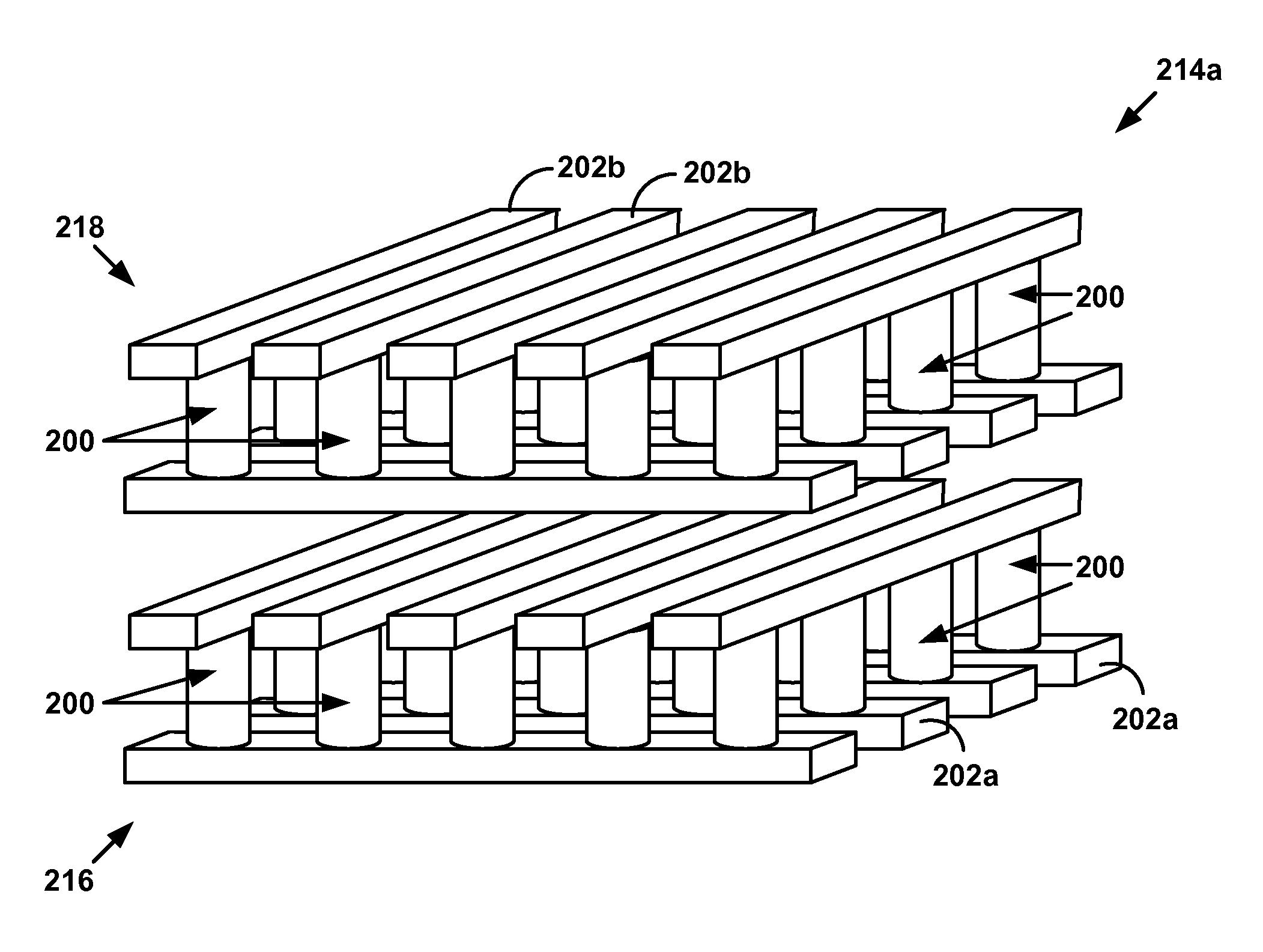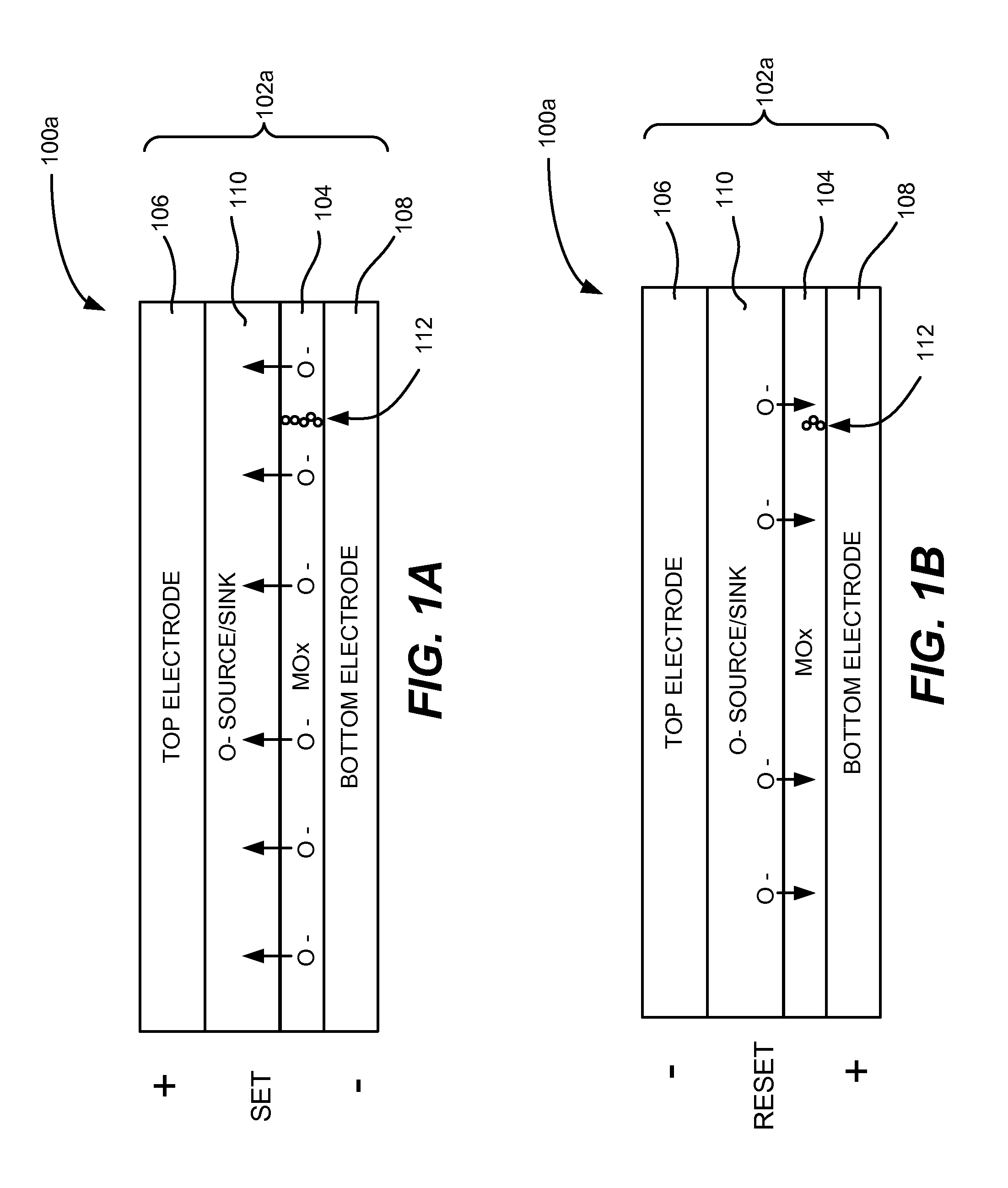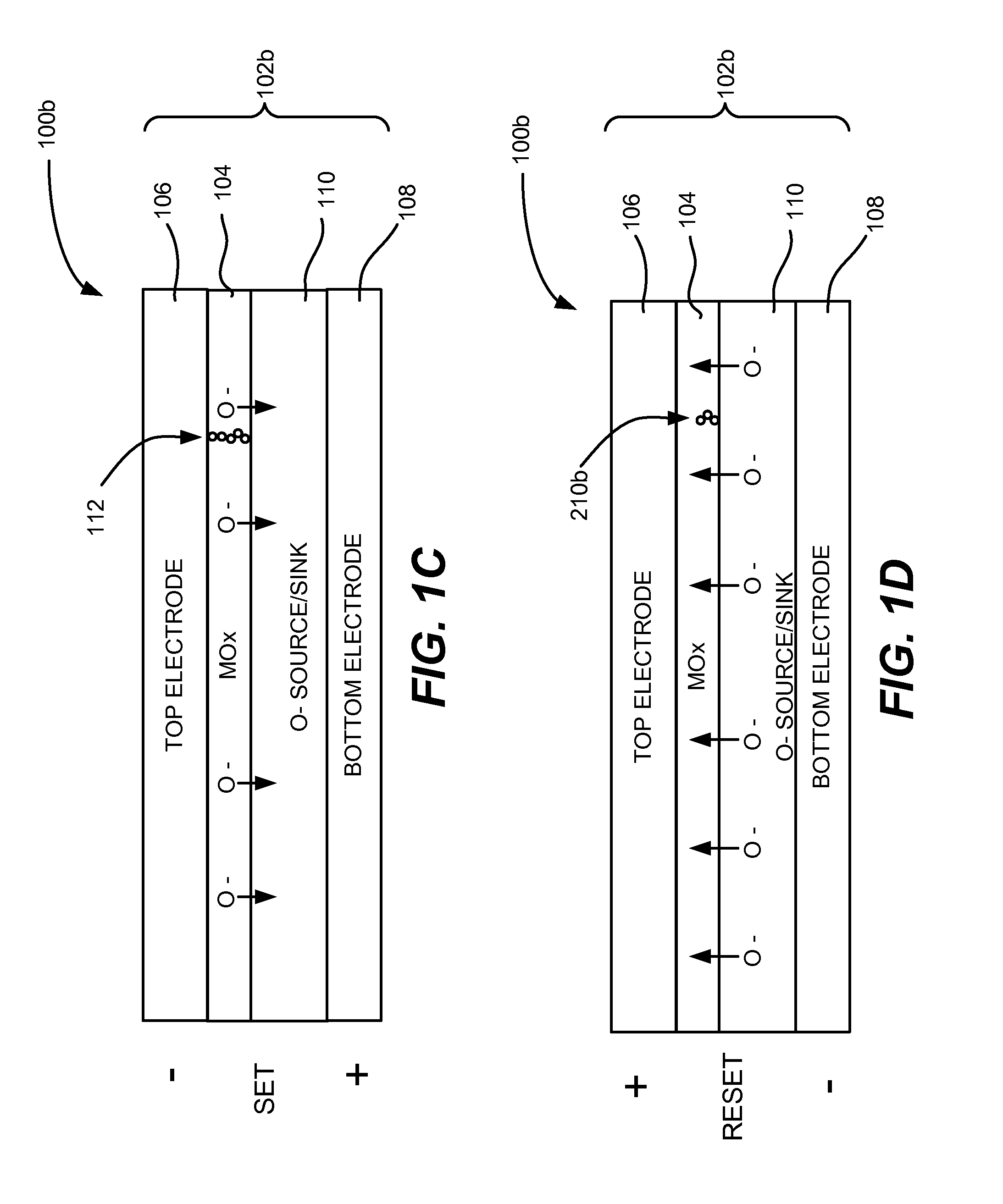Multi-level memory arrays with memory cells that employ bipolar storage elements and methods of forming the same
a memory array and memory cell technology, applied in the field of memory arrays, can solve the problems of difficult fabrication of memory devices from rewriteable resistivity-switching materials
- Summary
- Abstract
- Description
- Claims
- Application Information
AI Technical Summary
Benefits of technology
Problems solved by technology
Method used
Image
Examples
Embodiment Construction
[0034]A metal-insulator-metal (MIM) stack formed from a reversible resistivity switching (RRS) material sandwiched between two metal or otherwise conducting layers may serve as a resistance-switching element for a memory cell. The two conducting layers may serve as the top and bottom electrodes of the resistance-switching element, and may be used to apply an electric field across the RRS material that changes the resistivity of the RRS material from a high value to a low value and vice versa.
[0035]Unipolar MIM stacks employ similar materials on each side of the RRS material, such as the same or similar electrode materials, and generally operate the same independent of which electrode is biased positively or negatively. For some RRS materials, such as metal oxides, unipolar MIM stacks may not switch reliably and may suffer from low yield (e.g., due to set and reset operations being performed using the same voltage polarity with little separation between the set and reset voltages). A...
PUM
 Login to View More
Login to View More Abstract
Description
Claims
Application Information
 Login to View More
Login to View More - R&D
- Intellectual Property
- Life Sciences
- Materials
- Tech Scout
- Unparalleled Data Quality
- Higher Quality Content
- 60% Fewer Hallucinations
Browse by: Latest US Patents, China's latest patents, Technical Efficacy Thesaurus, Application Domain, Technology Topic, Popular Technical Reports.
© 2025 PatSnap. All rights reserved.Legal|Privacy policy|Modern Slavery Act Transparency Statement|Sitemap|About US| Contact US: help@patsnap.com



